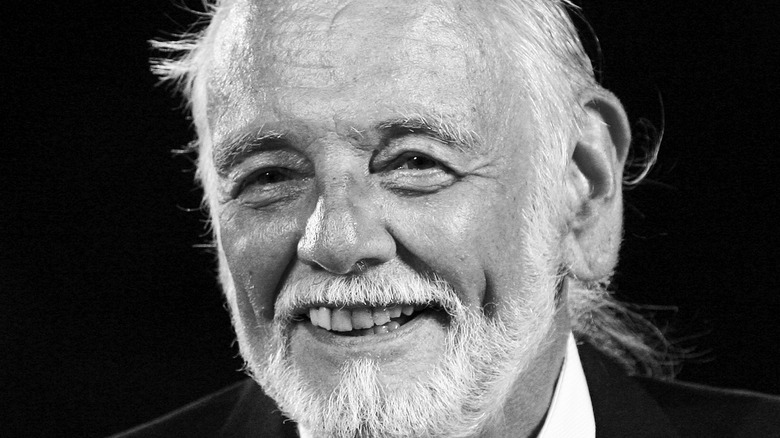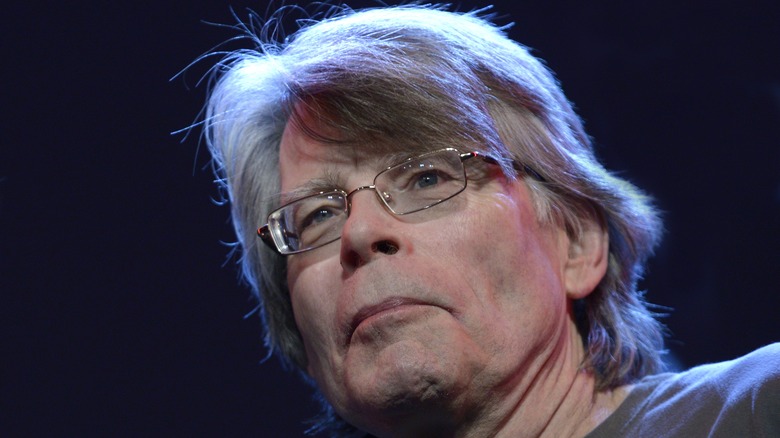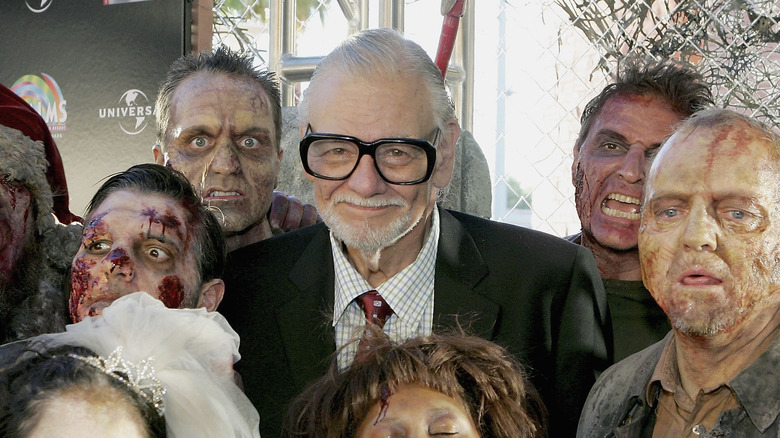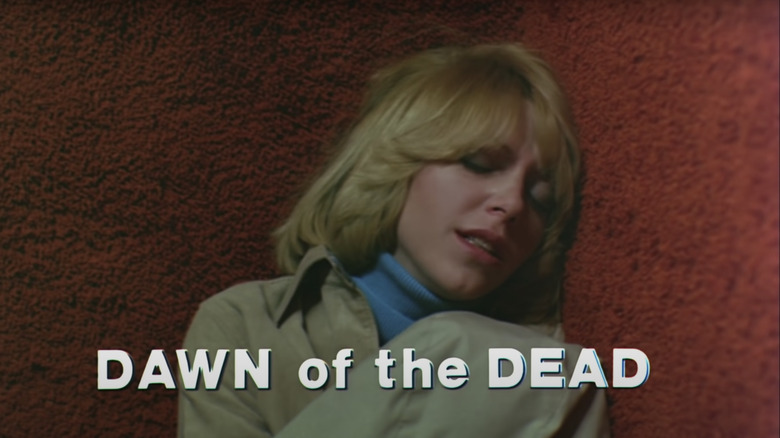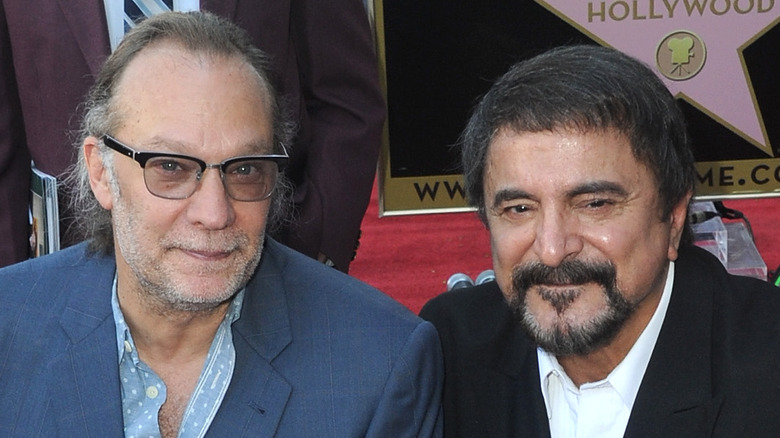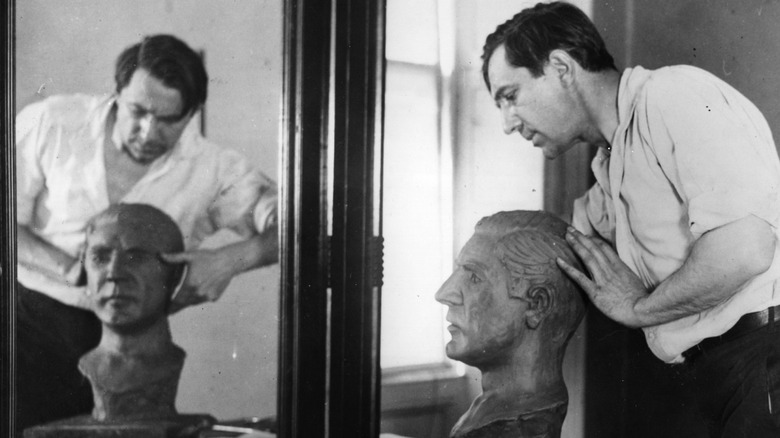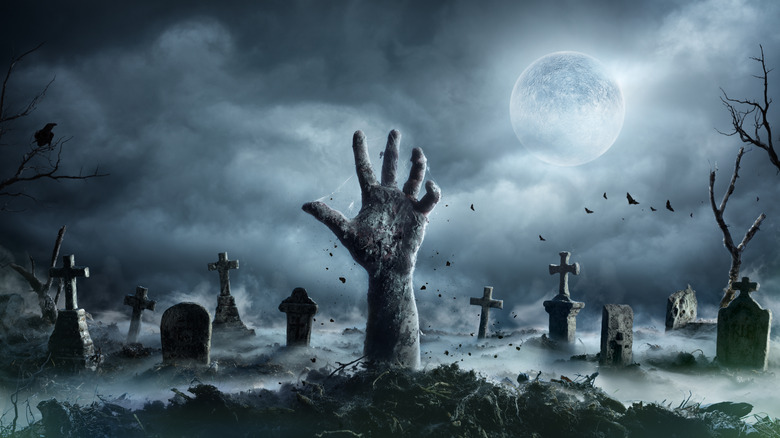How George A. Romero Changed The Zombie Trope As We Know It
In today's world, you'd be hard pressed to find someone who doesn't already have an idea of what a zombie is or what a zombie should be. There are rules to zombies in just about every media piece that features these terrifying abominations to humanity. While some — actually, most — zombie movies seem to prefer the route of placing their characters in a world in which zombies don't exist, thus throwing them entirely off guard, other films lean on the zombie rules as a part of the plot. A perfect example of a movie playing by the rules is 2009's "Zombieland." The film plays around with zombie rules so much that there are even sites like Anything Zombie that list the rules one by one. While "Zombieland" definitely added a few comical rules of its own, the guidelines known by zombie fans everywhere are simple.
Zombies are the dead come back to life. While it usually isn't known in movies why the dead are coming back as mindless rotting corpses that only want to feed on human flesh, a highly-contagious virus seems to be the popular choice. Possibly the most important rule of all is that to kill a zombie, one must destroy the brain.
Yes, the rules are known all too well, but how exactly did they come to be? In the world of horror, there is one person in particular who is considered to be the mastermind behind what we now know as the modern-day zombie: George A. Romero.
From working on Mr. Rogers Neighborhood to working with Stephen King
Born February 4, 1940, George Andrew Romero is legendary in the world of cinema, especially among the horror genre. According to Britannica, Romero graduated from the Pittsburgh college, Carnegie Institute of Technology, in 1960 before going on to do film work for the hit children's show "Mr. Rogers' Neighborhood." It was after college that, according to George A. Romero Foundation, he and nine of his friends founded Image Ten Productions. This production company would go on to release the film that would eventually earn Romero the title "The Godfather of Horror."
His innovation of the flesh-eaters we now know as zombies isn't the only work he's done that's made him an icon in the monster and mayhem industry. Romero worked with big names in the horror industry, like Stephen King on the 1982 anthology "Creepshow," and with legendary horror SFX makeup artist Tom Savini on a multitude of projects, including one of his later zombie films, "Dawn of the Dead."
'What if the dead stopped staying dead?'
In 1968, from Romero's production company Image Ten Productions, came a movie that would have an impact on the horror genre for decades: "Night of the Living Dead." According to Britannica, Romero and several of his friends pooled their money together, creating a project budget of a little over $100,000 dollars. Directed by George A. Romero and written by John A. Russo, "Night of the Living Dead" has what was considered to be a large amount of gore for a movie released in the 1960s. The movie was initially titled "Night of the Flesh Eaters" before being changed to the title we're all familiar with today.
Though it is considered to be a groundbreaking film that is a perfect metaphor for the social and political state of the world in the 1960s, the horrific imagery was too much for some. This made it difficult for Romero to sell the film and led to failed attempts at selling the film before it was finally accepted by the Walter Reade Organization and shown at the cinema (via Den of Geek).
"Night of the Living Dead" changed the zombie game, but according to Medium, Romero didn't have zombies in mind when he made the film. "When I did the first film, I didn't call them zombies. When I did 'Night of the Living Dead,' I called them ghouls, flesh-eaters." Romero then clarifies that the ghouls he created were the answer to a simple question he asked himself: "... what if the dead stop staying dead?"
Zombies? Or just a closer look at rampant consumerism?
Ten years after George A. Romero introduced the world to the new zombie, the second installment of his trilogy would prove once again that Romero wasn't afraid to give audiences something they'd never seen before in 1978's "Dawn of the Dead." This movie follows the previous rules set by Romero — destroying the brain of the zombie — and takes place right as the world has erupted into an all-out zombie hellscape. Some survivors take shelter in a shopping mall and find themselves living quite nicely until coexistence between the living among the living becomes no different than coexistence between the living among the dead.
The majority of the movie taking place in a mall is no mistake as it plays into the underlying comparisons of zombies to greed and mass consumerism. These undertones are still felt in zombie movies today, as recently as the 2004 film "Shaun of the Dead," a horror-comedy released as an homage to Romero's films. According to Explaining Film, the "Shaun of the Dead" writers wanted to critique the modern world as Romero had done in his 1978 film.
Joining forces with Greg Nicotero and Tom Savini
The third installment in Romero's zombie trilogy is 1985's "Day of the Dead." This movie looks beyond the beginning stages of the initial undead outbreak and shows a group of survivors who are desperately searching for a way to cure the zombie virus. Romero's ever-popular style of looking at the state of the world through the metaphors provided by horror doesn't let up in this film. The survivors find themselves once again surrounded by a class system. The movie's main character, Mary (Lori Cardille), is a scientist in an underground military bunker working tirelessly while under the protection of United States soldiers.
While this movie initially received mixed reviews, its importance to the Hollywood zombie remains. "Day of the Dead" had help from the legendary horror SFX artist Tom Savini (above, right), and it was the starting point for another horror legend, particularly in the zombie world, Greg Nicotero (above, left), who not only helped Savini with the effects but also got a small acting role in the film according to Cinema Blend. Nicotero has gone on to be one of the most prominent names in horror as the producer and director of "The Walking Dead" television series.
Romero didn't invent the zombie
While George A. Romero is considered the pioneer of the modern zombie, he isn't the first to come out with a zombie movie. In 1932, the movie "White Zombie," directed by Victor Halperin and produced by Edward Halperin, became the first feature-length zombie film, according to Stacker.
The film's antagonist is a Haitian Voodou master (Bela Lugosi) who is building an army of enslaved zombies. Not the same zombies as Romero's, though. While not quite following the original zombie folklore, the zombies in "White Zombie" are still more aligned with it than the modern-day flesh-eating corpses. According to The Atlantic, in "White Zombie," the undead are brought back by means of necrophilia and forced to do the evil bidding of whoever controls them.
These zombies weren't what Romero had in mind when he was creating his first zombie film, according to Medium. "To me back then, zombies were just those boys in the Caribbean doing the wet-work for Bela Lugosi, so I never thought of them as zombies." Romero explains why he never referred to the ghouls in "Night of the Living Dead" as zombies. The monsters Romero created were an entirely different style of frightening.
The modern zombie is a family affair
Today, zombies are very much a staple in pop culture, and the "rules" coined by George A. Romero are so well-known that most people don't even remember how they know the rules. They just do. From Halloween to everyday viewing, zombies have made their mark. Romero paved the way for the mainstream zombie and passed the torch to legendary creative minds like that of Greg Nicotero, one of the masterminds behind the wildly popular AMC television series "The Walking Dead." Nicotero and the cast and crew of the show have appeared on multiple talk shows and panels over the years, including Comic-Con, "The Last Drive-In" (via IMDb), and too many horror conventions to possibly keep track of. However, the show itself is groundbreaking for the world of the zombie due to the fact that its enjoyed by entire families.
While certainly not every family watches zombie movies and shows together, with horror-comedies like "Shaun of the Dead" and television shows like "The Walking Dead" and its spin-offs, zombies have become mainstream like never before. Each of these new creations follows the rules of Romero's initial movies, and they all have one very specific inspiration in common: George A. Romero himself. While creating a new zombie that the world won't soon let go of might not have been what Romero initially set out to do, he absolutely did it. His impact on the horror genre and what we've all come to accept as the classic zombie trope is unforgettable.
